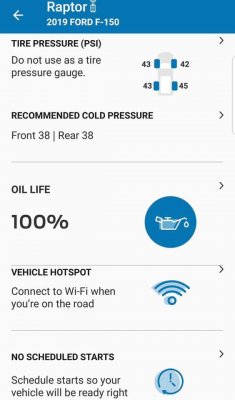oldfoggy
Member
Gen ! called for 44 coldAnything below 38 I get lights in my Gen 1 so I run 38 on road and 25 in the desert.
Filling info above is right . . . temp set cold!!!
Disclaimer: Links on this page pointing to Amazon, eBay and other sites may include affiliate code. If you click them and make a purchase, we may earn a small commission.
Gen ! called for 44 coldAnything below 38 I get lights in my Gen 1 so I run 38 on road and 25 in the desert.

Instructors at Raptor Assault run 34 front and 28 rear for off-road and course work. Recommended 38 front and 32-34 rear for daily street work. Been running 38 front and 34 rear and works well for me.
Sent from my iPhone using Tapatalk
I'd check those numbers, when we ran it they said for their course optimal tire pressure was 32 psi front and 28 rear, but we are splitting hairs [emoji16]Instructors at Raptor Assault run 34 front and 28 rear for off-road and course work. Recommended 38 front and 32-34 rear for daily street work. Been running 38 front and 34 rear and works well for me.
Sent from my iPhone using Tapatalk
Gen ! called for 44 cold
Filling info above is right . . . temp set cold!!!
The main reason for pressure climb is the moisture in the tire "air". When it gets hot it expands at a greater rate than just air. Nitrogen is very dry thus a lot less pressure climb when the tire heats up. The moisture is also the cause of wheel bead leaks from corrosion and pressure sensor malfunction. When you get your new tires mounted and they slap the slippy slide on the tire to mount it, that moisture will make your pressures jump up like crazy with temp. If you do use nitrogen you need to purge the tires multiple times to get rid of most of that moisture. In fact i have seen guys vacuum pump the tires to remove the air before purging.Air is 75 % nitrogen. That is enough nitrogen in my tires

